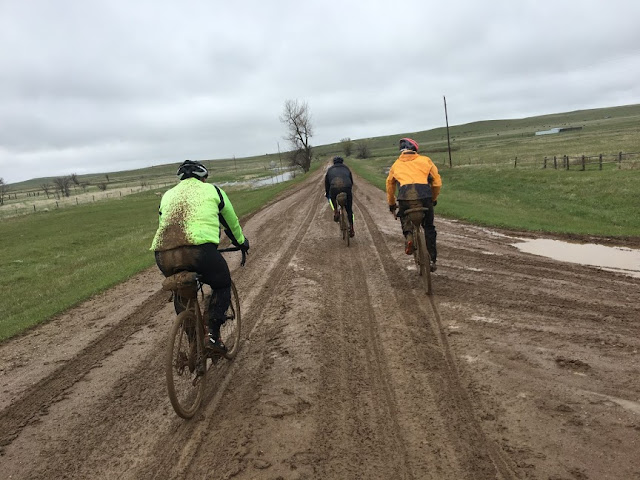For me, bikepacking is backpacking on a bike. That is, I would pack my bike with gear, ride most of the day, camp at night and resupply as prudent, all while being pretty much on my own. I'd create a general outline for the trip and let each day fill in the details, in the manner of my backpacking trips back in the 1970's and 1980's.
Speaking of backpacking, the benchmark of long, continuous hikes is the 2,200 mile Appalachian Trail. From the folks I know who have done it, through-hiking the AT is an unforgettable experience, a lifestyle, a community, or even a culture, but definitely not a race. Although someone will occasionally attempt to set a speed record with support crew, film crew, sponsors and the like, that is not the norm and that is not the aspirational standard. In other words, through-hiking the AT is not defined by racing anyone or anything.
 |
| Experimenting with bike and gear on an overnight bikepack trip in the Black Hills of South Dakota. |
With that perspective, I envision riding the GDMBR as follows:
- I would love to bikepack it, but not race it.
- I would likely start alone or with a few friends late in the summer, but would not start with 200 others in a "grand depart" facing arbitrary cutoffs to be considered a "racer."
- I might carry a private GPS tracker for my wife, but would not carry one to move a dot on a hyperspace "leaderboard."
- I would use paper maps, but would not carry a digital device for navigation.
- I would carry a flip phone for emergencies, but would not carry a smart phone.
- I would take pictures and notes for later, but would not post updates online.
- I would carry a light for emergencies, but would not install a generator hub.
- I would ride most all of the day, but not into the night, unless the conditions were magical.
- I would ride with others, for all or part of the route, but would not seek sponsors or support.
- I would take a day off the bike every week or so, as the layover days on backpacking trips were always memorable.
- I would welcome visits from family and friends along the way. No ifs, ands or buts.
- I would write something about the experience, but it would essentially be a personal journal or scrapbook for myself and any family or friends that may enjoy it. Like this blog.
Similarly, I encourage you to not restrict your dreams to limits set by others. We each have our own journey. Your GDMBR vision is yours. Find it. Nurture it. Ride it.
And for all those "racing" from the "grand depart" in June, if that's your way, go for it. Have a great time riding it your way.
I applaud everyone out there GDMBR dreaming and doing.









